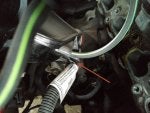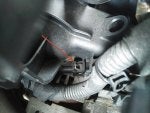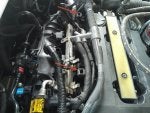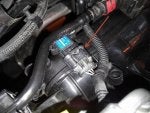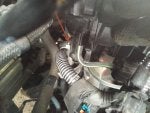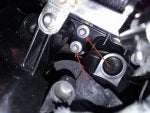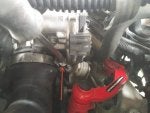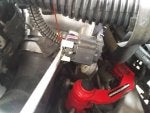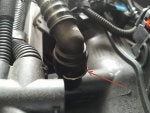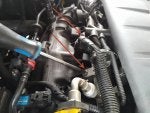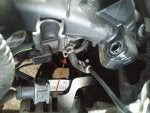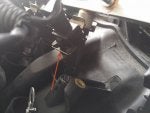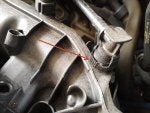How-To: Remove 1.4L Intake Manifold
Overview:
This tutorial will show you how to remove the intake manifold. Because the PCV check valve inside the intake manifold is prone to failure, this will be something you'll have to do at some time in your Cruze ownership if it's out of warranty. You may also want to do this if you feel like removing the tumblers (aka "porting") the intake manifold for a mild power increase.
Tools Required:
- Ratchet
- E10 socket
- T-30 Torx bit/screwdriver
- Flathead screwdriver (1/4" works)
- Lb-ft torque wrench that will go down to at least 15lb-ft (Available on Amazon.com)
- Long needle-nose pliers
- 10mm socket
Procedure:
Most of these steps don't need to be performed in any specific order, and you can generally figure out how to do all of these with a bit of checking around the manifold, but this tutorial should give you an idea of what you're looking at if you've never done this before. Give yourself about 2 hours to remove and reinstall this for the first time, especially if you have a tendency to drop bolts into the engine bay.
On the top-right of the intake manifold, remove the connector for the EVAP purge solenoid/valve by squeezing the two serrated edges and pulling upward. You'll have to squeeze pretty tight to get this one off.
Directly to the left of that, remove the brake booster line by squeezing the two square tabs on the sides of the line.
Directly to the left of that, remove the sensor wiring connector.
Disconnect the wiring connector from the EVAP purge solenoid/valve by pressing the tab on the back. Once this is done, you can slide the solenoid's housing to the left to get it off the intake manifold.
Work your way to the right of the manifold and remove the wiring connector from the throttle body, using a screwdriver to gently pry the locking retainer backward.
Using the same screwdriver, loosen the clamp on the intake tube. Don't pull the intake tube off just yet.
Move over to the left side of the intake manifold. Underneath it, there's a wiring connector that is held on by a clip. Use your pliers to pull the clip off, and pull the connector out.
To the right of that, you'll see a vacuum hose going into the manifold. Use your pliers to slide the clamp back, and pull the hose out with a twisting motion. DO NOT put pressure laterally on that hose or you will break the barb fitting off the solenoid. Don't press up, down, left, or right on that fitting; ONLY twist to loosen the hose and pull straight back. Alternately, you can try disconnecting the hose from the plastic line using the other hose clamp.
On the top of the manifold, remove the corrugated PCV hose by pulling the clip outward with your pliers. Hold on tight; if this goes flying, you'll be in for a fun time trying to find it.
Next, we move to the top of the manifold. There are two T-30 torx screws holding the fuel rail down. Now, you can bypass the next few steps and simply disconnect the fuel line with a fuel line disconnect tool, but then you have to deal with gasoline under pressure, and that doesn't really save you any time.
Unscrew the 10mm nut from the fuel rail, being careful not to drop it.
If you haven't already, pull the coil cover off and pull up the wiring harness from the resting positions as shown below. This will allow you to pull the wiring harness off the fuel rail.
Lift the fuel rail and the injectors should slide out fairly easily. Once you have some leverage, start from the driver side and remove each of the injector clips using your pliers, being careful not to lose any. Once removed, the wiring connector will slide right off the injector.
Next, remove the 6 E10 bolts holding the intake manifold on. Be sure not to lose the wire you disconnected the 10mm nut off of a few steps up, as it's being held down by one of these bolts.
With the bolts removed, lift the passenger side of the manifold and check underneath. There's a wiring harness held down in two locations. The first is a gray tab. To remove this tab, you'll need to squeeze the other side of it (you'll see what I mean when you look) with the pliers and push through. Squeeze the retainer horizontally.
Further down, you'll have a second connector. Disconnect this one as well.
At this point, the the only thing you'll have left to do is disconnect the intake tube. Wiggle it side to side while pulling and it will come off.
Installation is reverse of removal. Simply follow each step backwards to make sure you don't forget to reconnect something. Torque the E-10 bolts back down to 15 lb-ft and the fuel rail screws and nut hand-snug but not tight. With the intake manifold off, this would be a good time to do any degreasing you want to on the back of the engine.
Important note: be careful not to get any dirt or oil into the bolt holes. If you do, oil doesn't compress and neither does dirt, and you can easily strip the thread or break the bolt If you suspect you got any dirt or oil in those holes, blow them out with compressed air. You should be able to screw those bolts in by hand freely until they need to be tightened. If you can't and you start finding a significant amount of resistance, you have debris inside and you need to use a tap to clean out the threads. Just something to be mindful of when you're doing this.


